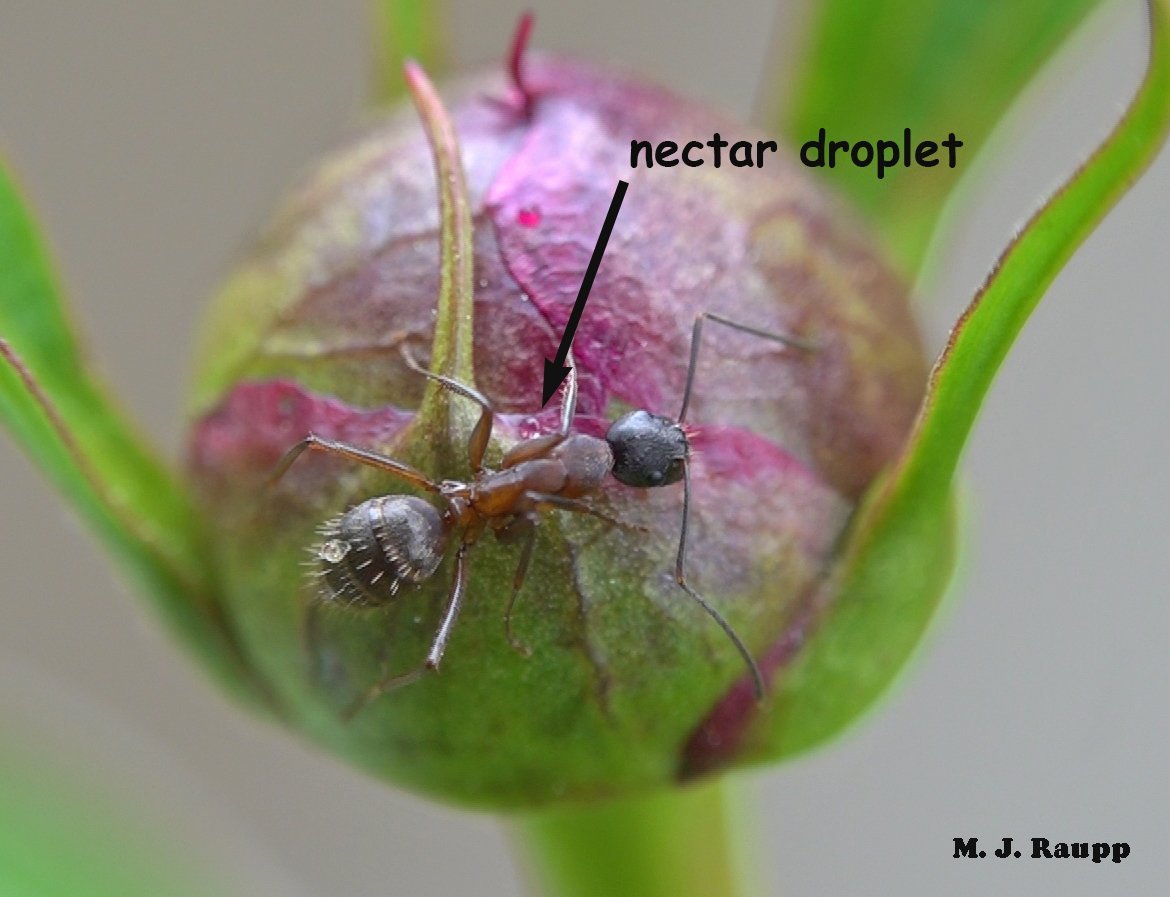Sometimes people ask what my favorite flower is. To me, this is an impossible question because it depends on where I am, what time of year it is, whether I’m looking for color, edibility, scent, etc. However, if we’re judging based on the sheer number of photos I have taken of them, the winner is peonies.
Some of my many peony photos.
My grandma Duffy had a patch of peonies in her yard. No late spring visit was complete until we had walked outside to marvel at their huge pink blooms. The flowers were also quite fragrant, and I remember on more than one occasion sticking my face into the soft petals, inhaling, and getting an ant up my nostril. It’s a wonder my enthusiasm for entomology remained intact.
The house I am living in now also has peonies planted outside. The first year I saw them bloom, I went out to (carefully- I’ve learned my lesson) sniff the flowers and again saw ants crawling all over them. Suspecting that these ant sightings on peonies were more than pure coincidence, I started doing some research online. Turns out this is another fascinating example of a plant-insect interaction!
Peonies (genus Paeonia) are perennial herbaceous plants. According to The Old Farmer's Almanac, they can be very long-lived: even 100 years! They are native to Asia, Europe, and western North America, and scientists currently recognize 33 different species. Humans have cultivated the plants for culinary and medicinal purposes for thousands of years, though in the United States they are most common as ornamentals.
Many people before me have noticed an association between peonies and ants. Unfortunately, some gardeners assume that the ants are harming their peonies and must be removed. This is not true! In reality, the peony plants have gone out of their way to recruit ants as bodyguards using extrafloral nectaries and we should leave them alone. Spraying insecticides is unnecessary and could harm more than just the ants.
Extrafloral nectaries are small spots on the underside of peony flowers (and many other plants) which secrete nutrient-rich sugars as a kind of lure for predatory insects like ants.
Nectar droplet on a peony flower bud. Photo credit: M.J. Raupp
Once a scout ant stumbles upon a nectary, it sends out pheromone signals to the rest of its colony and together they set up patrols all around the plant. The ants essentially get a source of free food, and they are willing to defend their turf. Whenever other insects like thrips try to munch on the seemingly vulnerable peony flowers, ant bodyguards attack. By preventing damage to reproductive parts (flowers), ants help the plant set seeds and get its genes into the next generation. It’s a classic food-for-protection scheme, and since both parties benefit from interacting, biologists call this kind of relationship a mutualism.
You may have heard an old wives tale about peonies and ants: supposedly, the flowers won’t open unless the ants are there to “tickle” the buds. While this story is cute and may convince people to leave the ants on their peonies alone, it isn’t true. Peony flowers will open even without ants around.
So what should you do if you want to make a bouquet of peonies without bringing ants into your house? If flowers are already open, hold them upside down and gently shake them to dislodge any ants hiding inside the petals. However, the easiest method is to cut flower buds off the plant BEFORE they fully open- when they’re still in the “marshmallow” stage. Wipe or rinse any ants off, then set the stems in a vase with water and the buds will fully open within a couple of days.
Flower buds in the “marshmallow” stage (shown above) will give slightly when pressed. Photo credit: F. D. Richards from Clinton, MI, CC BY-SA 2.0, via Wikimedia Commons
Written by Kelsey McGurrin



